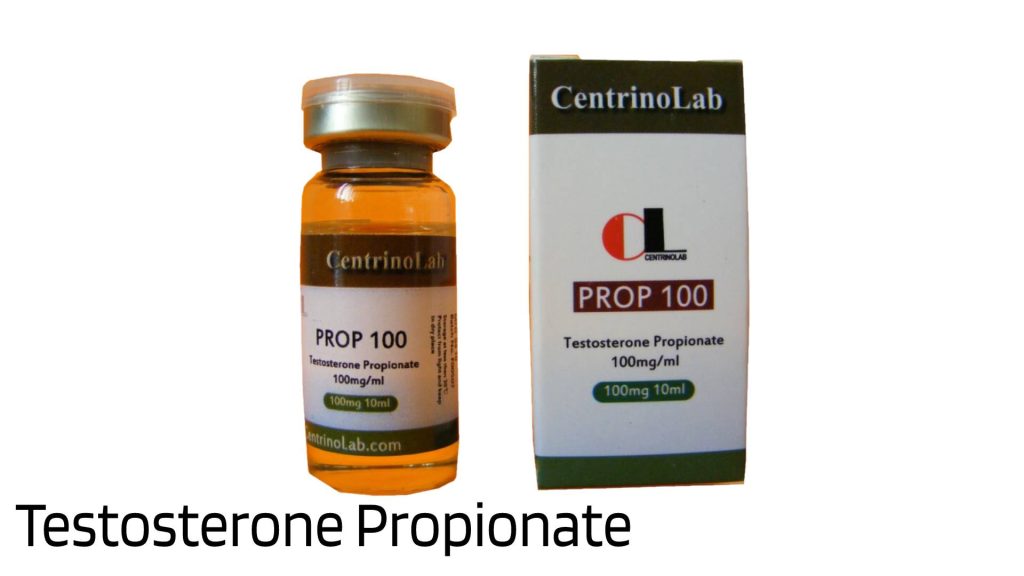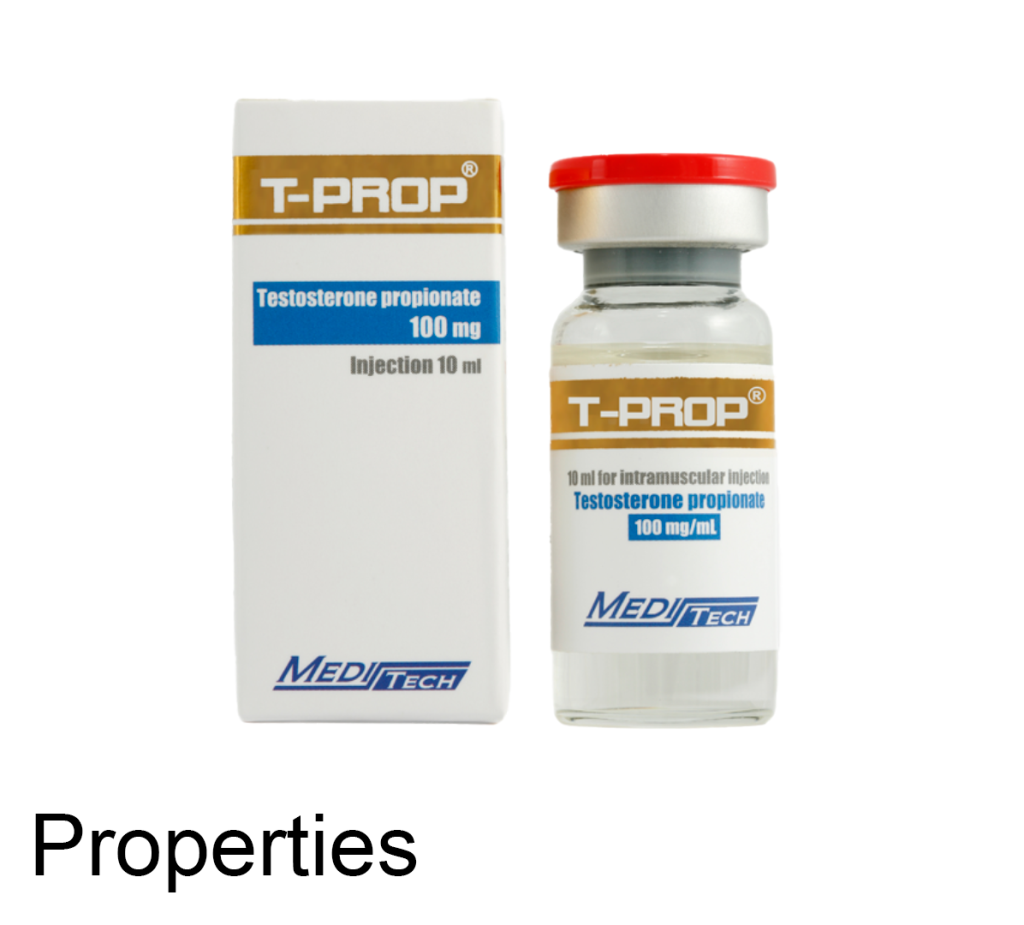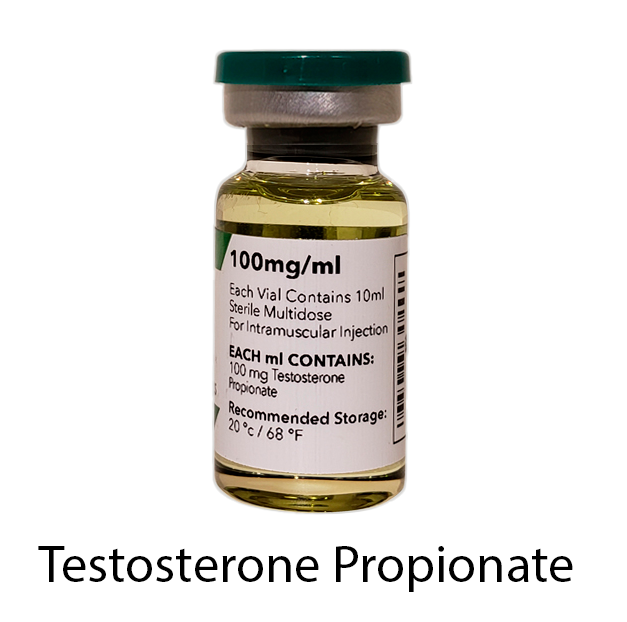Testosterone Propionate is a single ester testosterone compound, and each represents one of the most important testosterone compounds produced.
When synthetic testosterone was first created, it was in its pure form. In short, no ester is added, providing a fast-acting compound that will necessarily require a very frequent application schedule. In 1937, German pharmaceutical giant Schering wanted to release the first ester-based testosterone in testosterone propionate under the trade name Testoviron. The same trade name he would eventually give to his testosterone enanthate product.
By binding the propionate ester to the hormone, this will allow for controlling the release time of the hormone and providing a more effective way to keep blood levels stable.

Although this is not the first synthetic testosterone preparation created, testosterone propionate will be the first commercially available testosterone product. It would also dominate the medical community and much of the nascent performance-enhancing community until the 1960s.
Testosterone propionate is a single ester testosterone compound, and each represents one of the most important testosterone compounds produced. When synthetic testosterone was first created, it was in its pure form.
In short, no ester is added, providing a fast-acting compound that will necessarily require very frequent application design. In 1937, German pharmaceutical giant Schering wanted to launch the first ester-based testosterone in testosterone propionate under the trade name Testoviron.
The same trade name he would eventually give to his testosterone enanthate product. The binding of the propionate ester to the hormone will allow the release of the hormone to be controlled and provide a more effective way of keeping blood levels stable.
While this is not the first synthetic testosterone preparation created, testosterone propionate will be the first commercially available testosterone product. It would also dominate the medical community and much of the nascent performance-enhancing community until the 1960s.
Properties
Testosterone propionate has a specific androgenic effect: it stimulates the development and function of the external genitalia, prostate, seminal vesicles, as well as secondary sexual characteristics in men (voice, hair).
Participates in the formation of body constitution and sexual behavior in men, increases libido and potency, stimulates spermatogenesis. Reduces the production of luteotropic and follicle-stimulating hormones.

Testosterone is an antagonist of female sex hormones – estrogen, has antitumor effects in breast tumors in women. It has an anabolic effect, which manifests itself in stimulating protein synthesis, reducing fat deposition, delaying the body’s need for protein synthesis of potassium, phosphorus, sulfur, increasing calcium fixation in bones and increasing muscle mass. With sufficient protein nutrition stimulates the production of erythropoietin.
It is slowly absorbed from the injection site after intramuscular or subcutaneous administration. Testosterone circulating in the blood enters the target organs, where it is reduced to 5-a-dihydrotestosterone, which interacts with cell membrane receptors and penetrates the cell nucleus. Up to 98% of the drug in plasma is bound to proteins, mainly globulins. It is metabolized in the liver to inactive and inactive metabolites excreted in the urine. Approximately 6% of the drug is excreted unchanged in the intestine.
Mechanism Action
Endogenous Testosterone is responsible for sexual maturation at all stages of development during life. It is synthetically prepared from cholesterol. Androgen function in male development begins in the fetus, is essential during puberty, and continues to play an important role in the adult male.
Women also secrete small amounts of testosterone from the ovaries. The secretion of androgen from the adrenal cortex is not sufficient to maintain male sexuality.
Increasing androgen concentrations in plasma suppresses gonadotropin-releasing hormone (which lowers endogenous testosterone), luteinizing hormone and follicle-stimulating hormone through a negative feedback mechanism.
Testosterone also affects erythropoietin production, calcium balance and blood sugar levels. Androgens have a high solubility in fats, allowing them to enter target cells quickly.
In cells, testosterone undergoes enzymatic conversion to 5-alpha-dihydrotestosterone and forms a loosely bound complex with systolic receptors. The androgenic effect is a result of the initiation of transcriptional and intracellular changes in the nucleus caused by this steroid receptor complex.
Normal endogenous androgens elicit RNA polymerase, leading to increased protein production. These proteins are responsible for normal male sexual development, including growth and maturation of the prostate, seminal vesicles, penis and spinal cord.
During puberty, androgens cause muscle growth and rapid development with a redistribution of body fat. In addition, changes occur in the throat and vocal cords and deepen the voice. Adolescence ends by the development of a beard and the growth of hair in the body.
Epiphyseal fusion and growth arrest are also controlled by androgens, as well as maintenance of spermatogenesis. When endogenous androgens are not available, the use of exogenous androgens is essential for the normal growth and development of men.
